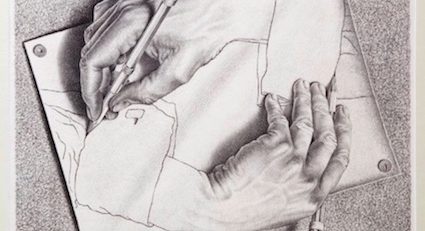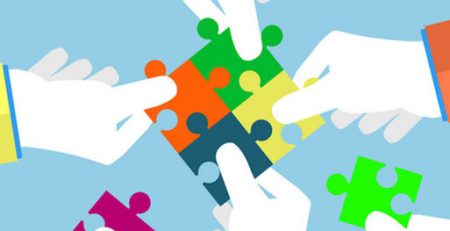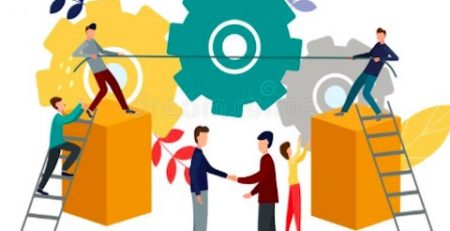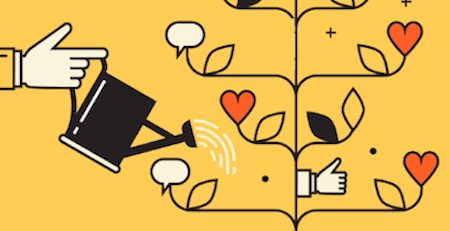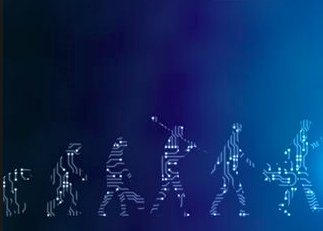Implicit Bias: To What Degree Are Your Decisions As a Leader Impacted By Your Blind Spot?
Written By: Cahide Akkuzu
Reading time: approximately 6 minutes
I am writing today about a topic that has great impact on everybody. Do we really have free will when we take a decision, when we shop, when we choose who to hire or who to promote, or when we decide which party to vote for? How conscious are our decisions when we lead others or when we lead our own lives? As I was interested to find out more about diversity and inclusion, I came across research findings about the topic of ‘Implicit Bias’, which in some cases was referred to as ‘Unconscious Bias’ or ‘Hidden Bias’.
A research done in 2016 got my attention. It was conducted at Sheffield Hallam University and was about a hiring process. Hypothetical CV’s, that met all requirements expected form the candidates, were given to the hiring companies. The researchers asked the people who evaluated the CV’s, to rate and score the CV’s according to their convenience. The surprising results had shown that being overweight and/or a candidate’s gender were important criteria when it came to rating.
Another research had shown the effect of race when it comes to hiring processes. Every CV that was given to the evaluators, was exactly the same except the names. According to the research results, every 1 candidate out of 9 with Western names were called for interviews. But only 1 person out of 16 candidates with African or Asian names got a call. Research shows that if we share similar physical attributes, are from a similar culture or even if a person has a name with an easy pronunciation, we find them more talented and we favor them. We prefer the one that is like us or is familiar to us. You can read more about these researches from the links provided at the end.
Research shows that we make these judgments unconsciously, in one fifth of a second. This is what is referred to as “Unconscious Bias”. Our conscious reasoning comes into play after half a second. And because we have already made up our mind in the first one fifth of the second, the moment our conscious reasoning kicks in, we start to look for justifications that support our decisions. When we explain our justifications and reasoning to other people, we become more and more convinced about the ‘rightness’ of our decision. We succeed in the things that we put our mind into and that we focus on. So, we put a lot of effort into making sure our decisions were right at the first place. If they turn out to be ‘wrong decisions’, we can find plenty of excuses. Let’s be honest with ourselves. What have we not recognized or not seen that has been in the shadow? What have we not given enough attention to, and why? What has been our loss because of this inattention? Are we taking our decisions freely and objectively considering we do not pay attention to that of which we are unaware of? Do we have free will? Or are we the victims of our beliefs that are deeply rooted in our subconscious mind. Are we victims of our subconscious beliefs that was created by the society that we are a part of, the culture, our environment, our experiences and our education? Above all, we as leaders carry the responsibility to lead others and to lead a cause. How do the decisions that we take, that are impacted by our ‘implicit bias’, have an impact on ourselves, on the people around us and on the results of our cause?
As I was curiously reading about this topic, I came across Project Implicit, which was carried out by three researchers out of Harvard, Washington and Virginia University. They developed a tool called Implicit Association Test that helps people become aware of their implicit choices and behaviors. They created multiple tests in different categories. They offer these tests also in different languages. I did the test on gender and my results really surprised me. My test results indicated that the association I make between women and family are stronger than the association I make between women and their careers. Likewise, the association I make between women and social studies are stronger that the association I make between women and life sciences. In my conscious, I am really not aware of this tendency that I have. I have taken many decisions of hiring or promoting or giving people certain responsibilities, and I am now questioning how these implicit associations might have impacted my past choices. I am providing the link to the Implicit Association test at the end, please try it out for yourself.
In their book Blindspot: Hidden Biases of Good People, Anthony Greenwald and Mahzarin Banaji, two of the researchers who developed the Implicit Association Tests, share their research results about “Implicit Bias”. They share their insights from 14 million tests they conducted up until the release of the book.
When Martin Lindstrom published his book Buyology in 2010, we saw that neuro marketing experts really put a lot of attention on this topic. Various studies have shown that market research and focus groups do not provide reliable results. The things we say about a product do not give reliable insights about how we are going to act about that product or whether we are going to buy it or not. Instead, marketing strategies -that address our thoughts, feelings, desires and instincts that lie in our subconscious- succeed.
Now let’s look into corporate environments. Mahzarin Banaji, who is one of the authors of Blindspot, says in her article published in Harvard Business Review:
“Most of us believe that we are ethical and unbiased. We imagine we’re good decision makers, able to objectively size up a job candidate or a venture deal and reach a fair and rational conclusion that’s in our, and our organizations, best interests. But more than two decades of research confirms that most of us fall woefully short of our inflated self-perception. We’re deluded by the illusion of objectivity, the notion that we’re free of the very biases we’re so quick to recognize in others. What’s more, these unconscious, or implicit, biases can be contrary to our consciously held, explicit beliefs.”
The reality is, “Implicit Bias” causes us to make ineffective decisions. Even the smallest ineffective decision can lead to various unforeseen results that impact our organization. Nowadays, most companies pay attention to this topic and educate their employees, managers and leaders about diversity and inclusion. Diversity is not just about gender, it is covering many aspects of a person like age, culture, ethnicity, origin, values, beliefs, thinking style, and physical attributes. Employees and leaders of a successful organization support the practice that everyone has equal opportunities; they see differences as wealth, and they consciously encourage those differences in various ways. They try to move their organization towards their goals and visions, with conscious behavior and effective decisions. In order to be able to do this, the first thing employees and leaders need to do is to be aware of and in acceptance of their “Unconscious Bias”. We all have it! Being aware that we are biased, we need to be watchful, we need to be awake and we need to put our conscious focus on the way we take decisions.
To be aware and focus on making conscious decisions, let’s look at some of the common “Implicit Biases”:
Conformity Bias – This is the act of agreeing with majority. It is the belief that if majority thinks in a certain way, than the probably that they are right is high. An example is, that we are preferring products that majority of people have preferred. Another example is the act of affirming somebody if majority speaks good of this person.
Trusting good-looking people’s abilities, also called ‘Beauty Bias’ – We all have common references in our heads called stereotypes, like how a CEO or sales representative should look like. One of the common stereotypes is our belief that a good-looking person will succeed. For example, a research in the USA showed that more than 60% of CEO’s are taller than 1.82 meters even though only 15% of male population has this attribute. 36% of CEO’s are taller than 1.89 meters but only 4% of the male population are this tall. This suggests that there is a stereotype in the USA about how a CEO should look like.
Halo Effect – If a person has an attribute that we like we mostly believe that other attributes of this person will be good, too.
Horns Effect – This is the opposite of the Halo Effect. If we do not like something about a person, we likely will believe that other attributes of this person will be unlikable, too.
Liking people that share similar attributes with us – We, instinctively, like people that look like us or share an attribute of us. We believe that their characteristics will be more positive. We show more closeness to people we have a lot in common. For example, people that we graduated from the same school with or that we are born in the same city.
Attribution Bias – When we get a positive result, we believe that this resulted from our own talent and personality. But if we get a negative result, we think that this failure comes from conditions that are unrelated with us. If it is about another person, we believe the exact opposite. When other people succeed, we believe it is luck; when they fail, we blame their wrongdoings or personalities.
There are of course more types of implicit biases and more examples. The most important thing is that we need to be mindful, focused and aware of the decisions we take. We must be watchful about the clues that could indicate the possibility of an implicit bias that is unconsciously present.
Next month I will continue to write about Diversity and Inclusion, I will focus on Inclusive Leadership.
Links for research and sources that I referred to in this article:
Project Implicit – Implicit Association Test:
https://implicit.harvard.edu/implicit/
Research done by Sheffam Hallam University:
https://www.youtube.com/watch?v=C-Dp372Jsj4
Other research information:
https://www.youtube.com/watch?v=Q0ne13lv8hE&t=103s
Context Professionals Corporate Coaching and Consulting




